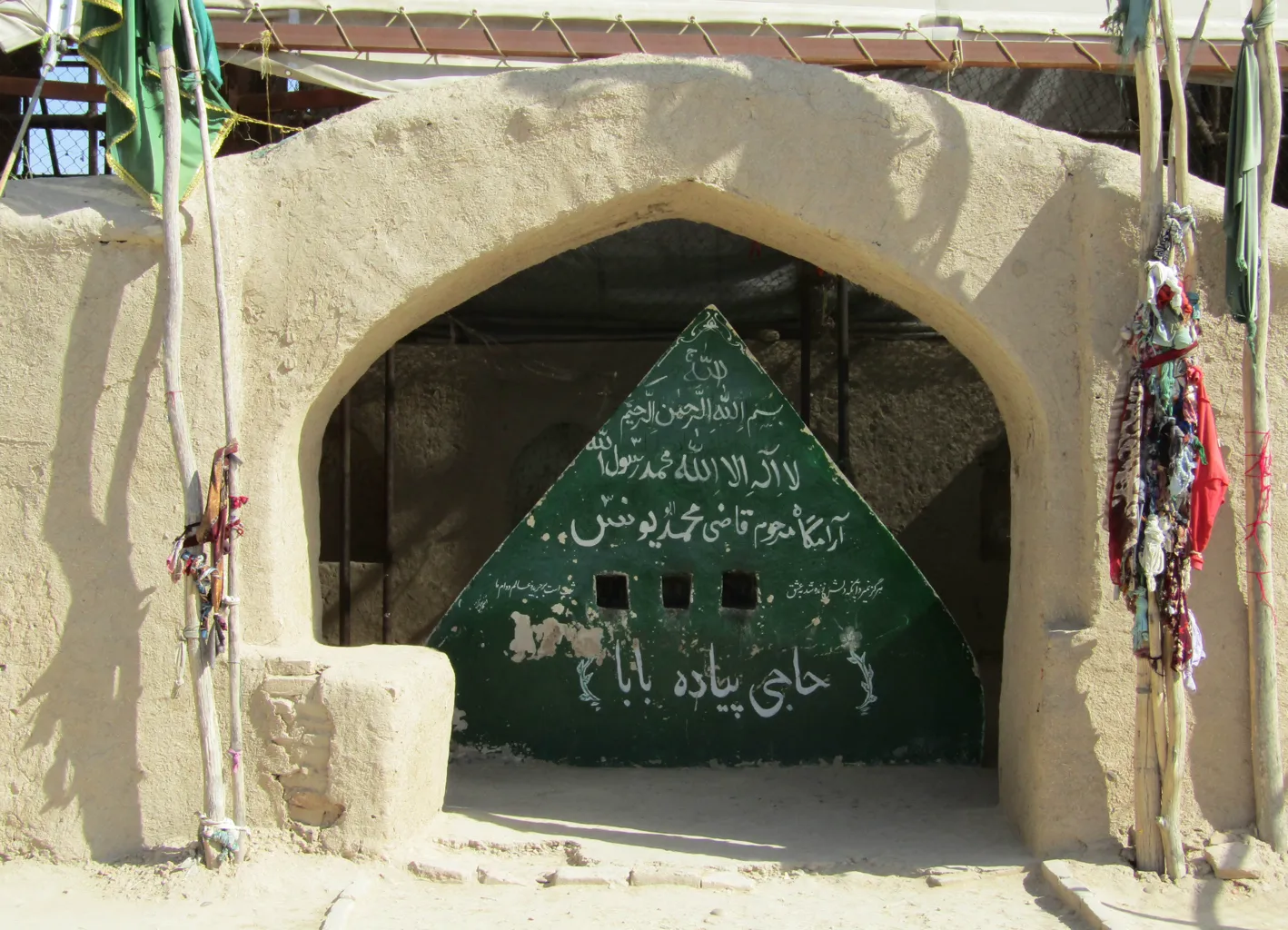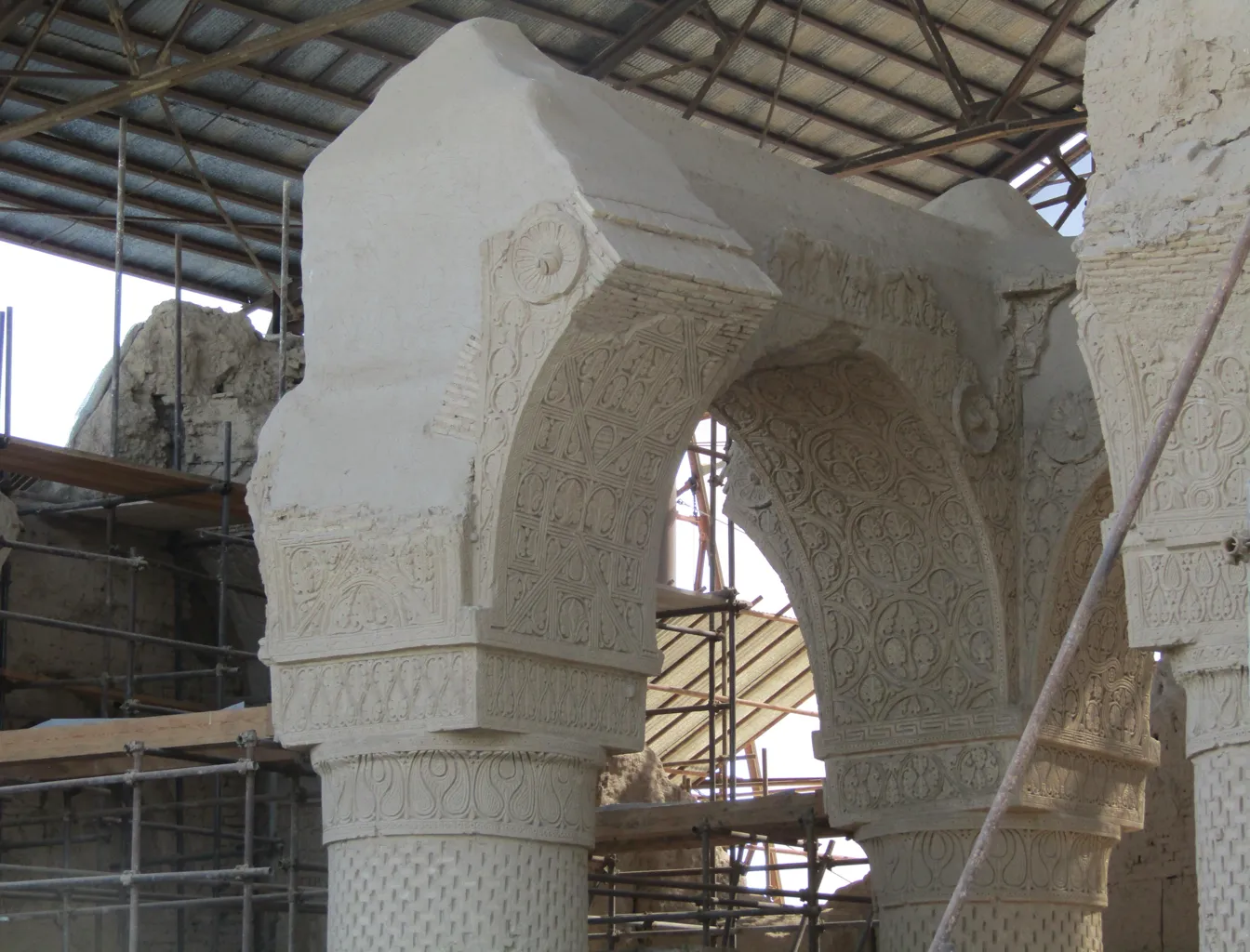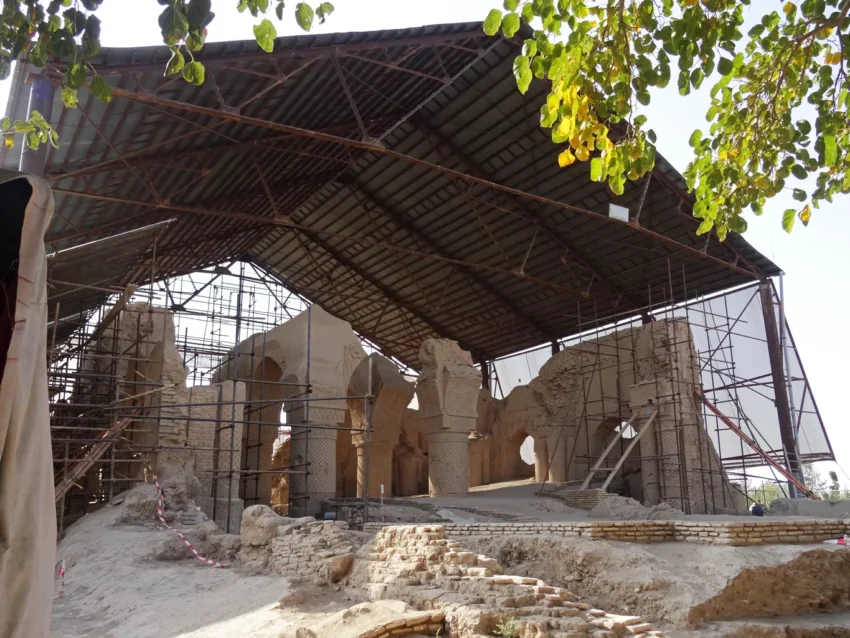Historical and Architectural Significance of Haji Piyada Mosque
The Haji Piyada Mosque, also known as the Noh Gonbad Mosque, holds a distinguished place in the annals of Islamic architecture as it is considered the oldest Islamic building in Afghanistan. Located near the ancient city of Balkh in Balkh Province, this mosque is a significant relic from the early Islamic period, providing insights into the architectural and cultural transitions of the time.
Get your dose of History via Email

Architectural Features and Construction
The mosque’s construction is traditionally dated to the 9th century AD, aligning with the Abbasid architectural style prevalent in Samarra. However, a more nuanced study by archaeologist Chahryar Adle suggests an earlier construction date around 794 AD. This hypothesis is supported by radiocarbon dating and a detailed analysis of the mosque’s decorative styles, which bear resemblance to Abbasid decorations found in Mesopotamia.
The mosque was commissioned by Fazl ibn Yahya, a Barmakid governor of Khorasan under the Abbasid caliph Harun al-Rashid. Intriguingly, it was constructed within the precincts of a pre-existing Buddhist complex known as Now-Bahar, which had connections to the Barmakid family, highlighting the cultural and religious transformations of the region.
Measuring 20 by 20 meters, the mosque originally featured nine domes, each covering one of the nine bays into which the interior space was divided. The structural elements, including columns and arches, were adorned with intricately carved stucco, showcasing a variety of designs that underscore the artistic endeavors of the period. The use of mud-brick for the outer walls was typical of the architectural practices in the region during that era.
Historical Context and Significance
The mosque’s location and architectural features provide a window into the Islamic conquests in Central Asia and the resultant cultural synthesis. Balkh, often referred to as the “Mother of Cities,” was a crucial hub on the Silk Road, and the mosque’s establishment there underscores the city’s importance as a center for religious, cultural, and economic exchange.
The transition from a Buddhist to an Islamic complex also reflects the broader shifts occurring across Central Asia as Islamic governance and culture began to take root in the region, replacing earlier religious traditions and practices.

Conservation Challenges and Efforts
Over the centuries, the Haji Piyada Mosque has suffered significant damage due to natural disasters, particularly earthquakes. The earliest recorded damage possibly occurred in 819 AD, leading to the collapse of all its domes over time. The vulnerability of the structure to erosion prompted conservation efforts, including the installation of a metal roof to protect the remaining ruins from further degradation.
Recognizing its historical and cultural significance, the mosque was listed on the World Monuments Fund’s 2006 World Monuments Watch list of 100 Most Endangered Sites. Conservation initiatives have been undertaken with the support of various organizations, including UNESCO, the Aga Khan Trust for Culture, and the US Embassy in Kabul. These efforts culminated in a significant conservation project launched in 2009, with several phases completed by scholars from the University of Florence, aimed at stabilizing and preserving what remains of this ancient structure.
Conclusion
The Haji Piyada Mosque is not merely an archaeological site but a testament to the rich and complex history of Afghanistan and the broader Central Asian region. Its study offers invaluable insights into early Islamic architecture and the cultural dynamics of an era marked by significant religious and social transformations. As efforts continue to preserve this ancient monument, it remains a symbol of the historical continuity and architectural heritage of the Islamic world.
Sources:

